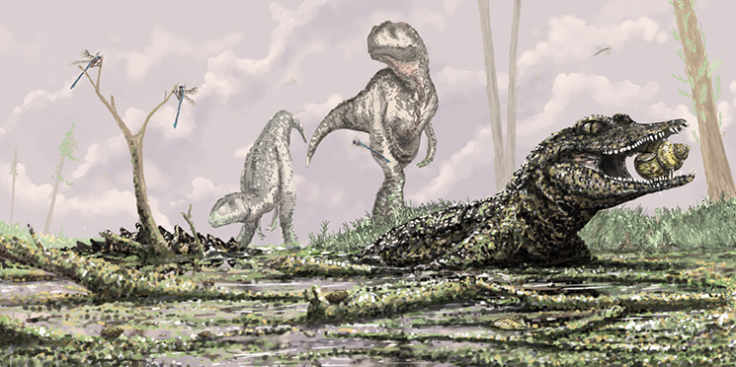New Ancient Crocodile Species Discovered, ‘Button Tooth Crocodile’ Identified By ‘Sheer Serendipity’ [PHOTO]

Two fossils found three months apart were found to fit together perfectly to make a complete skull of a completely new crocodile species.
The ancient species, Koumpiodontosuchus aprosdokiti, which means the "unexpected button toothed crocodile," was discovered on the Isle of Wight, a county located in the English Channel. The findings, published in the Acta Palaeontologica Polonica, describe the new species as measuring 2 feet long and living about 126 million years ago.
“The sheer serendipity of this discovery is quite bizarre,” Dr. Steve Sweetman, a paleontologist from the University of Portsmouth, said in a statement. “Finding the two parts is in itself remarkable. That they should be found three months apart by different collectors and taken to the museum where the same members of staff were on duty and therefore able to recall the first specimen defies belief!”
The first part of the tiny skull was found by Diane Trevarthen, while on a fossil-hunting holiday with her family. She later brought the fossil to the museum, Dinosaur Isle, believing it belonged to one of the island’s well-known larger crocodiles from the Cretaceous period.
It was only three months later, when two other fossil hunters found a tiny fragment of a skull, did the staff from the Dinosaur Isle museum decide to compare the two discoveries. The two specimens, one of the back half of the skull and the other of its snout, fit together perfectly.
At first, Sweetman thought the fossils belonged to a crocodile known as Bernissartia fagesii.
“I was convinced it was a Bernissartia skull because of its small size – the fully grown animal was only a little over 2 feet long from nose to tail – but particularly because of its button-shaped teeth, which are unique among crocodyliforms. They were used to crush mollusc shells and other invertebrates with tough outer coatings,” Sweetman said.
Sweetman took a closer look at the find and discovered the way the bones were arranged in the ancient reptile’s skull differed from his previously held theory. Specifically, the bones of the palate and the inner opening of the airway of the nose were not positioned the way he expected.
“The location of the hole in the mouth, where the airway from the nose opens, was surrounded by bones at the very back of the palate,” Sweetman said. “This tells us that the discovery is not only a new species but also a new genus of ancient croc closely related to, but subtly different to those alive today.”
© Copyright IBTimes 2024. All rights reserved.






















